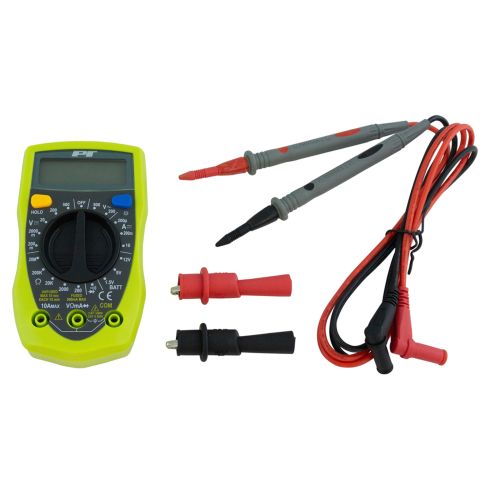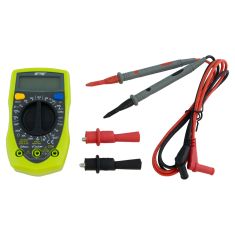1AXAA00035-Multimeter Performance Tool W2969

Multimeter

Frequently bought together
Product Reviews
Loading reviews
4.25/ 5.0
4
4 reviews
Great multimeter
February 12, 2020
This is a must have for any electrical work!
September 13, 2021
Works good
February 6, 2022
A+A+
Thumbs down on aligator clips, should be a separate wire set for the money.
August 21, 2024
The little aligator clips are not really usable. Any slight movement they slip right off the pointed ends of the standard leads.
Testing the continuity is above the range of test range of 1-2. A 3, which could be acceptable, I guess.
Customer Q&A
No questions have been asked about this item.
















